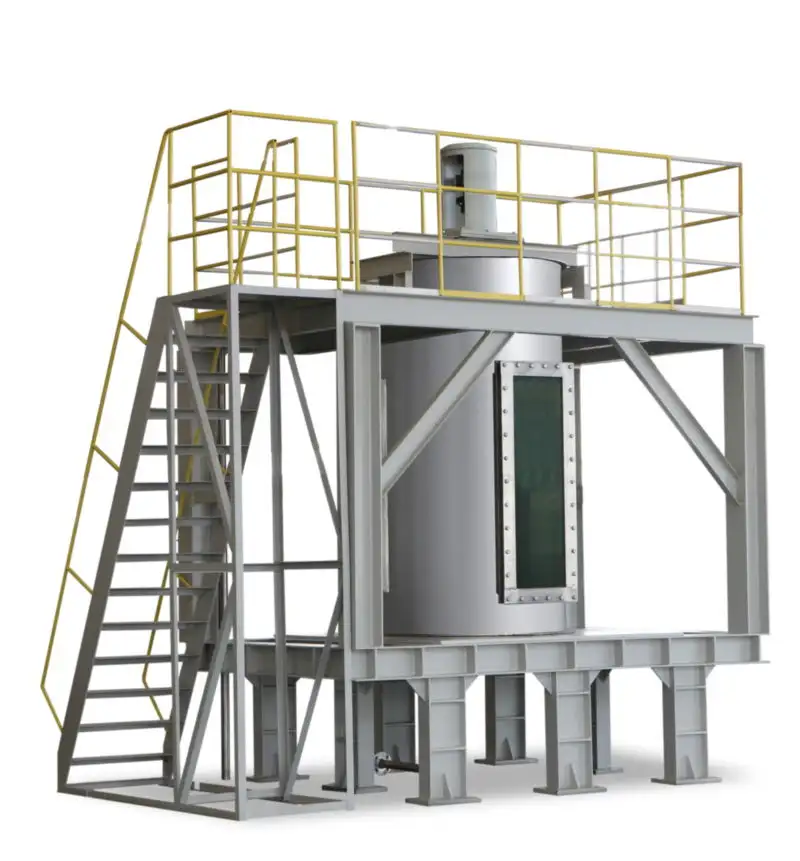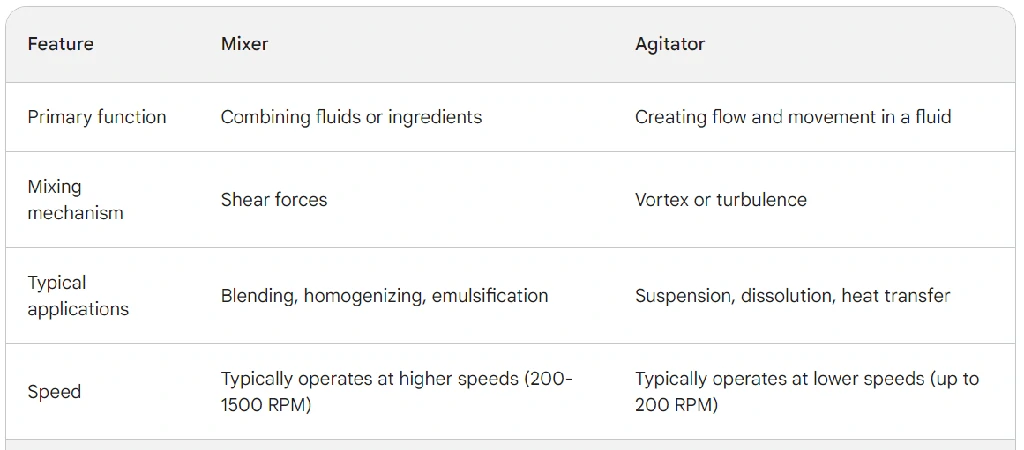What Is The Difference Between An Agitator And a Mixer?
Set 11, 2024
The terms “mixer” and “agitator” are often used interchangeably, but there is a subtle difference between the two.
Agitators: Maintaining Fluid Movement and Homogeneity
Agitators are primarily used to maintain flow and movement within a fluid, ensuring it remains homogeneous. The key function of an agitator is to generate a vortex or turbulence, which stirs the liquid and prevents the separation of components. This process helps to keep any suspended particles, solids, or dissolved substances evenly distributed throughout the fluid.
Agitators are crucial in applications where it is necessary to prevent settling, especially in industrial processes involving liquids with solid particles. By continuously moving the fluid, agitators maintain a uniform composition, ensuring that the solids do not settle at the bottom of the container. Typical industries where agitators are used include chemical processing, wastewater treatment, and food production, where maintaining uniformity in the fluid is critical to product quality.

Mixers: Creating a Consistent Blend of Multiple Fluids or Ingredients
Mixers, on the other hand, are designed to combine two or more fluids or ingredients into a cohesive mixture. They work by applying shear forces, which help break down the different components and ensure they are uniformly dispersed throughout the mixture. The key function of a mixer is not just to stir but to blend the ingredients in such a way that the result is a consistent and homogenous product.
Mixers are commonly used when there is a need to create a precise blend of ingredients, such as in pharmaceuticals, cosmetics, food and beverages, or paints. The goal is to ensure that all ingredients are evenly mixed, with no separation or clumping of components. This is essential for achieving product quality and consistency, especially in processes where different materials need to chemically interact or combine into a new product.
Here is a table summarizing the key differences between mixers and agitators :

Key Differences Between Agitators and Mixers
Purpose:
Agitators: Primarily used to maintain movement and prevent settling in fluids, keeping the mixture homogeneous over time.
Mixers: Designed to combine multiple ingredients into a uniform blend, ensuring a consistent mixture.
Mechanism:
Agitators: Rely on creating turbulence or a vortex to keep the components suspended within the fluid. They focus on maintaining movement rather than combining different substances.
Mixers: Use shear forces to break down ingredients and ensure they are evenly distributed, focusing on combining and blending substances.
Applications:
Agitators: Common in industries where maintaining homogeneity in a single-phase fluid or preventing particle settling is important, such as chemical processing, wastewater treatment, and storage tanks.
Mixers: Employed in processes requiring the blending of multiple ingredients or substances, such as in food processing, pharmaceuticals, and cosmetics production.
End Goal:
Agitators: Aim to maintain the physical state of the fluid by preventing separation or settling.
Mixers: Aim to create a new mixture by thoroughly combining different components into a uniform product.
In general, agitators are used in applications where the fluids are already mixed, while mixers are used in applications where the fluids need to be mixed together.
Jingjin is a leading Agitator Tank manufacturer, offering high-quality solutions designed to meet the needs of various industries. As a well-established China Agitator Tank supplier, Jingjin specializes in producing durable and efficient tanks that ensure optimal fluid mixing and prevent settling. With advanced technology and robust construction, Jingjin’s agitator tanks are trusted across sectors such as chemical processing, wastewater treatment, and food production.
